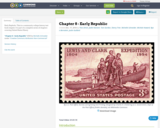
Early Repbulic. This is a community college history text book chapter. It is part of a complete series of chapters covering United States Hisory
- Subject:
- History
- Material Type:
- Diagram/Illustration
- Reading
- Date Added:
- 06/01/2016

Early Repbulic. This is a community college history text book chapter. It is part of a complete series of chapters covering United States Hisory
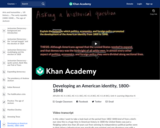
From 1800 to 1848, the United States grew tremendously as a country, adding new territory and building national connections of business and transportation. But just twelve years later, the Civil War erupted! In this period, was the United States developing a unified national identity or a divided regional identity?
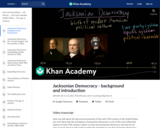
Modern American political culture began to emerge in the early nineteenth century. In this video, Kim discusses the transition from the United States' earlier aristocratic political culture to a more democratic one as the right to vote was extended to a broader segment of American citizens.

Rematch! Kim discusses the presidential election of 1828, when Andrew Jackson once again ran against John Quincy Adams and won. This election was the first to employ many modern election tactics, such as mudslinging.
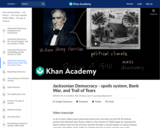
In the final video in this series, Kim discusses Andrew Jackson's presidency and how he attempted to increase the power of the executive branch. A growing movement of opposition to Jackson coalesced into the Whig Party, which employed many of the same tactics as Jackson in the election of 1840.
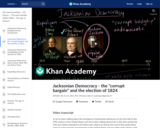
In the contested presidential election of 1824, John Quincy Adams faced off against Andrew Jackson and Henry Clay.
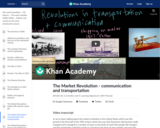
Canals, railroads, steamboats, telegraphs! Kim talks about the transportation and communication revolutions of the early 19th century and how they changed American business.
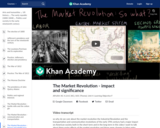
So what's the big deal about the Market Revolution, anyway? Kim describes how it changed the nature of American labor, markets, and culture.
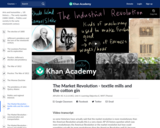
The Market Revolution of the early nineteenth century changed the way Americans worked and did business. In this video, Kim discusses the inventions that brought new productivity and forms of work to American business - the Industrial Revolution.
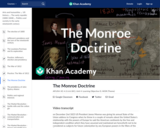
In 1820, James Monroe articulated the US foreign policy goal of ending European colonization in the Americas.
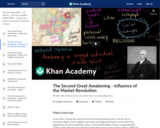
Changes in work, geography, and economics influenced the emergence of the Second Great Awakening. In this video Kim explores some of the social and economic factors in the early nineteenth century that may have led to the religious revival.
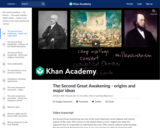
What was the Second Great Awakening? Kim discusses the origins and major ideas behind this period of religious revival in the early nineteenth century in the United States.
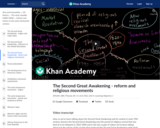
The Second Great Awakening played a role in major reform movements of the nineteenth century, including temperance and abolition. In the last video in this series, Kim discusses some of the new religious movements and reform movements that grew out of the Second Great Awakening.
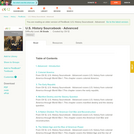
From CK-12, U.S. History Sourcebook - Advanced covers U.S. history from Colonial America through World War I. This book provides high school U.S. History teachers and students with sets of primary and secondary sources about important topics. Some teachers will use it as a supplement to a traditional textbook. For those looking to leave the textbook behind entirely, it will provide a course with basic structure and continuity, and will reduce the burden of finding new primary sources for each class meeting. However, it is not yet comprehensive enough to meet the coverage requirements of, for example, an Advanced Placement test.
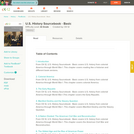
From CK-12, U.S. History Sourcebook - Basic covers U.S. history from Colonial America through World War I. This book provides high school U.S. History teachers and students with sets of primary and secondary sources about important topics. Some teachers will use it as a supplement to a traditional textbook. For those looking to leave the textbook behind entirely, it will provide a course with basic structure and continuity, and will reduce the burden of finding new primary sources for each class meeting. However, it is not yet comprehensive enough to meet the coverage requirements of, for example, an Advanced Placement test.
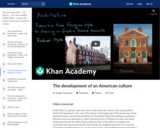
In the early 1800s, American artists, architects, and writers began to create uniquely American styles. In this video, Kim discusses the quest to create architecture suitable to a republic and the influence of Romantic ideals on American artists and writers, including the Hudson River School and the Transcendentalists.
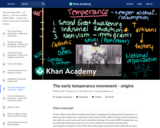
What started the temperance movement, which attempted to curb the consumption of alcohol in the United States? Becca discusses the temperance movement of the early 19th century. Created by Becca.
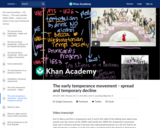
What happened to the nineteenth-century temperance movement? Becca discusses the rise of the American Temperance Society, teetotalism, and the temporary pause in the movement that accompanied the Civil War. Created by Becca.